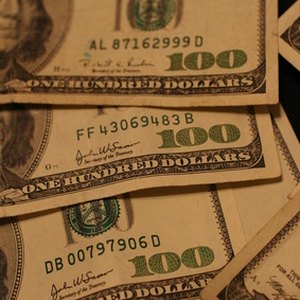
Monetary policy is the set of actions taken by a country's government-appointed central bank to steer the economy toward a particular direction and align it with political and national objectives. Monetary policy is a government's tool to control the economy through a central bank, and according to The Federal Reserve Board, a central bank may take actions "to influence the availability of money and credit as a means of helping to promote national economic goals."
Evolution
Monetary policy controls the supply of money in an economy. The concept of controlling the availability of money evolved after the Great Depression in the 1930s based on the ideas proposed by John Maynard Keynes, who first pointed out that the supply of money directly affected a nation's economic health. Based on Keynes' ideas, governments attempted to control the supply of money by establishing central banks, which in turn developed and implemented the monetary policy. The thinking was that governments would actively try to stabilize the economy by controlling money supply and creating credit.
Federal Reserve
The primary objective of monetary policy is macroeconomic stability. In controlling money supply and creating accessible credit, the Federal Reserve, which is the central bank of the U.S., works toward maintaining the value of the U.S. dollar and its worth in other currencies. The U.S. government determines the economic condition by evaluating determinants such as levels of unemployment and inflation, economic growth and balance of payments to foreign countries, and uses monetary policy tools to direct the economy.
Types of Money
In monetary policy "narrow" money supply, or M1, refers to the currency in circulation, that is, the bills that are held by citizens and exchange hands frequently. M1 also includes money in checking and savings accounts because it is easily accessible and almost as liquid as cash. "Broad" money supply refers to M2 and M3, which include term deposits held at financial institutions and money market mutual funds.
Inflation And Investment Considerations
Increasing money supply may lead to rapid inflation, an economic condition known as hyperinflation. In countries facing hyperinflation, the currency loses value rapidly and becomes increasingly worthless compared with the goods and services produced in the country. A restrictive monetary policy, on the other hand, strictly controls the supply of money, resulting in very low levels of inflation but also may dampen economic growth.
Monetary policy influences investment decisions. For both individual investors and investor groups, an insight into a country's monetary policy may prove invaluable in evaluating investment opportunities, as the availability of money and ease of accessing credit directly influence the price of investments.
Monetary Policy Instruments
A country's central bank attempts to stabilize the economy by open market operations, regulating reserve requirements and the discount window provision. In open market operations, the most commonly used monetary policy instrument, the central bank buys and sells government bonds on the open market.
Central banks also control money supply by changing the reserve requirement, that is, the minimum percentage of deposits that a financial institution must keep with the central bank.
One final instrument is the discount window, which is a provision for banks to borrow from the central bank at discounted rates. The discount window is the only monetary instrument policy not totally controlled by the central bank.
References
- The Financial Pipeline: Monetary Policy
- Federal Reserve Bank of Chicago. “The Federal Reserve's Dual Mandate.” Accessed August 13, 2020.
- European Central Bank. “Independence.” Accessed August 13, 2020.
- Board of Governors of the Federal Reserve System. “What does it mean that the Federal Reserve is "independent within the government"?” Accessed August 13, 2020.
- International Monetary Fund. “What Is Keynesian Economics?” Accessed August 13, 2020.
Writer Bio
Shoaib Khan began writing in 2006, while working as an advertising professional. His work has appeared in marketing and business communication materials, including print advertisements, billboards and product brochures. Khan completed his Master of Accounting degree at the University of New Mexico.

